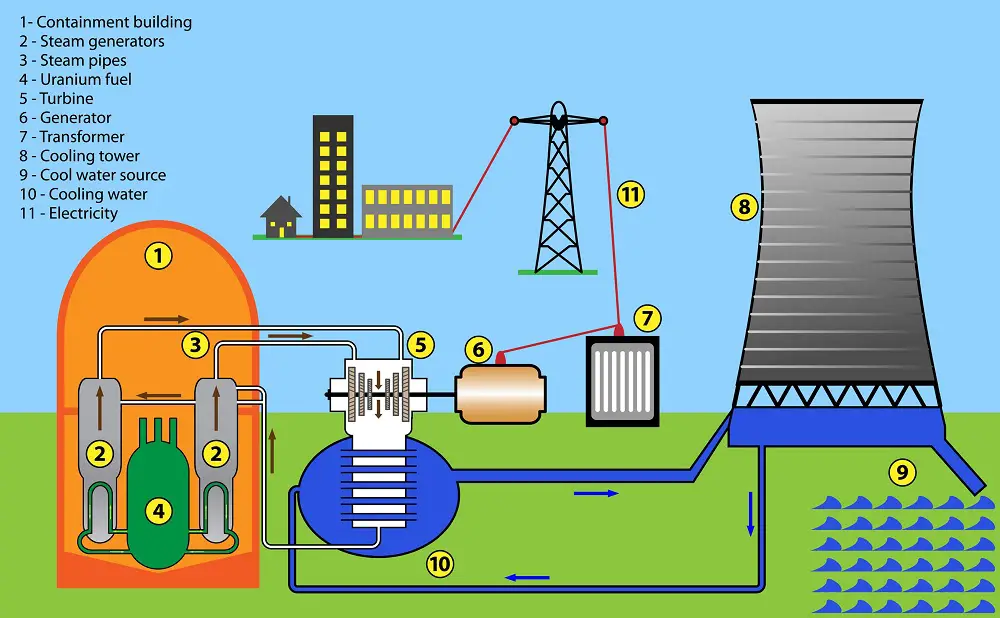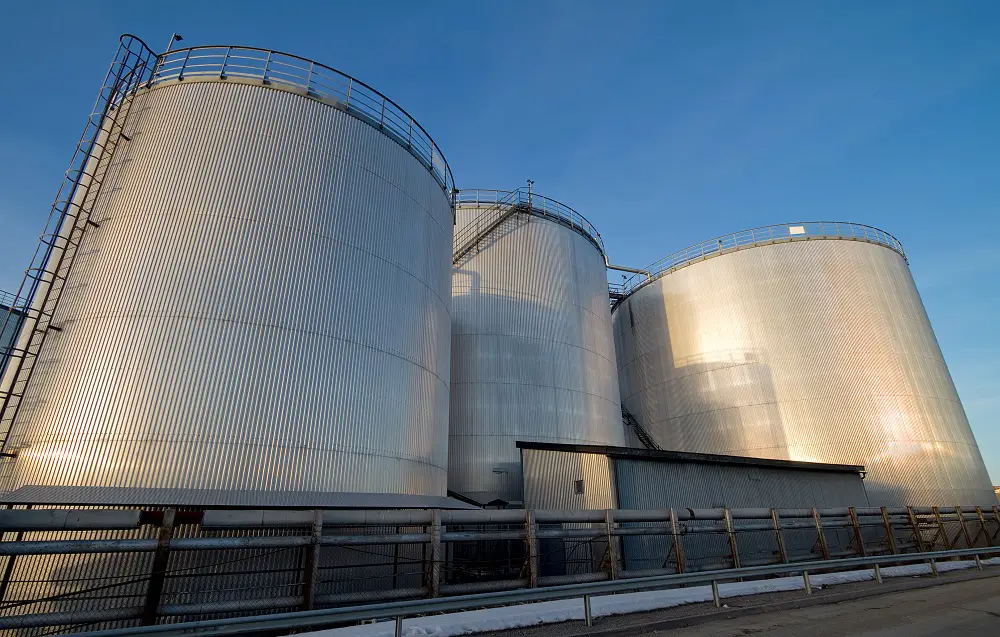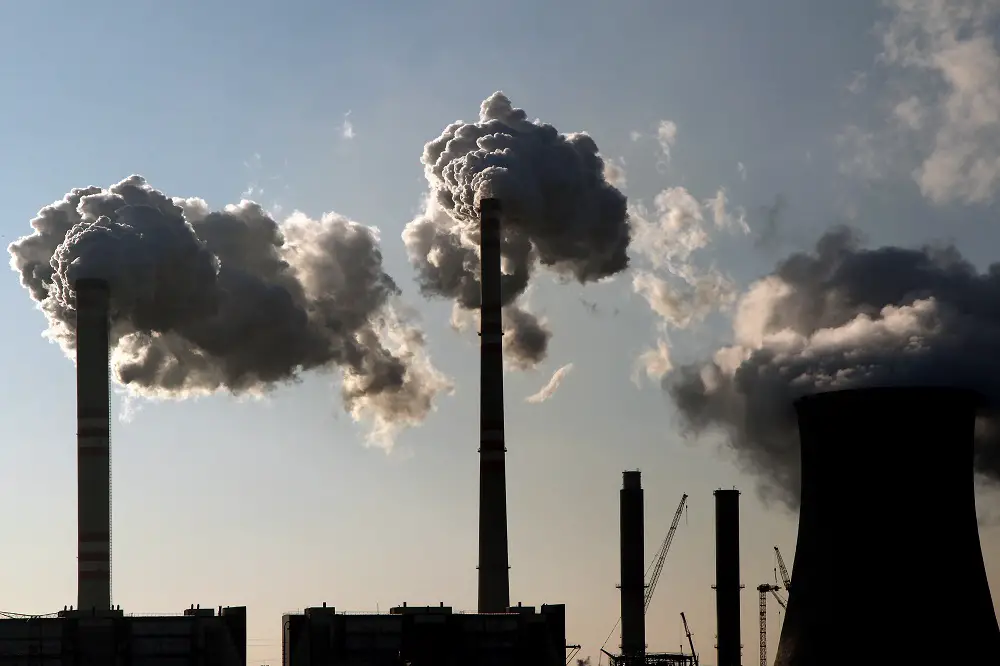The Advantages and Disadvantages of Nuclear Energy
In order to have a better idea of the advantages and disadvantages of nuclear energy, it’s best to have points of reference.
In terms of energy, the main points of discussion are:
1. Cost
2. Environmental impact
3. Reliability
This article explores these aspects in order to see how nuclear power stacks up against other forms of electricity generation, for example fossil fuels and wind turbines.
Cost
How much money it costs to build and operate a power plant is the bottom line for all forms of electricity generation. In the industry, this is given a value in dollars per megawatt ($/MW) and described as the Levelized Cost of Electricity, or LCOE. The higher the LCOE, the more expensive it is to generate electricity that way. By way of comparison, currently the cheapest way to generate electricity (according to a 2020 study1 by BloombergNEF) is on-shore wind turbines, which have an LCOE of $44/MWh.

Cost is a major disadvantage of nuclear compared to other forms of electricity generation. Arriving at an exact LCOE value for nuclear is difficult, as it varies from project to project, depending on factors like size of plant and discount rate applied. Although the operational and fuel costs for nuclear are very low, due to the high costs of constructing a nuclear power plant, overall it works out as an expensive way to generate electricity2. Assuming a nominal value of 10% discount rate, the LCOE of nuclear works out at approximately $90/MWh3. This is over twice as expensive as onshore wind.
At the heart of all nuclear power stations is the nuclear reactor core, where heat is generated to boil water into steam, which drives steam turbines to generate the electricity.4 Nuclear reactor cores are immensely complex pieces of equipment, containing nuclear fuel rods that are exceptionally hazardous. They require a large array of safety and security systems to ensure the plant operates in a way that creates no danger to the people working there.
The decommissioning of nuclear power stations is not factored into the LCOE, and is an additional hidden cost of nuclear generation. Once a nuclear power plant reaches the end of its useful life, it must be decommissioned. Decommissioning costs include safely removing all nuclear fuel rods; long-term storage of high, medium and low-level radioactive material; safely dismantling and disposing of irradiated construction materials; demolition of buildings and returning the site to a green-field state ready for re-use.
As of 2017, only 10 nuclear power plants have been decommissioned in the US.5
Calder Hall in the UK was the first operational nuclear power plant in the world, and it began generating electricity in 1956 with its 196MW turbine. After 47 years of continuous operation, it was finally shut down in 20036. Safely disposing of the highly hazardous radioactive materials is a complex and sensitive operation, and the last of the active fuel rods were not removed from the site until 2019. Calder Hall is still being decommissioned at time of writing (November 2021)7.
Decommissioning Calder Hall has cost over £37 billion pounds to date8 – equivalent to over £1 billion for each year it was operating. This cost has been paid for by the UK Government, effectively a huge subsidy for nuclear generation from UK tax payers. Decommissioning is projected to complete 2027 at the earliest, by which time it is expected to have cost around £50 billion.
Decommissioning costs for other nuclear power plants are not this high. However, nuclear generation is still the most expensive way to generate electricity when decommissioning is included.
Environmental Impact
For nuclear generation, there are two major environmental impacts to consider:
a. Carbon Dioxide (CO2) emissions
b. Radioactive waste
By far the most pressing environmental issue facing every country on the planet today is climate change. There is overwhelming agreement amongst the scientific community that global warming is being driven to a significant extent by greenhouse gas emissions (eg., CO2) produced by human activity9. Reducing emissions of CO2 and other greenhouse gases as quickly as possible is the overriding environmental impact concern for any form of electricity generation.
Unlike using fossil fuels (eg., coal, oil, gas), nuclear energy generation does not rely on burning anything to generate electricity. This is one of nuclear power’s greatest advantages – at point of generation, it emits no CO2 into the atmosphere. Whereas coal generation, for example, emits around 2.2 US tons of CO2 per MWh of generated electricity.10
Nuclear energy is the only form of electricity generation that creates radioactive waste material, and this is a big disadvantage. This waste material is very dangerous to humans and animals – it must be disposed of safely and put somewhere it cannot harm anyone.
High-level radioactive waste from a nuclear power plant remains dangerous for many thousands of years, and working out how to store it for that length of time is a problem that is still vexing scientists today. The latest initiative is to try and turn the nuclear waste into glass, a process called vitrification, reducing its likelihood of leaching out radioactive contaminants into the environment.11
Reliability
The reliability of a power plant can be derived using what is called the Capacity Factor (CF). Recorded as a percentage (%), this is a measure of how much electricity the plant generates, compared to its maximum power generation capability.
For example, if a nuclear power plant had a maximum output power of 1000MW, and it was only generating at 900MW, it would be said to be operating with a CF of 90%. By regularly measuring the CF, a good indication of a particular power plant’s overall reliability can be arrived at.
Nuclear power plants score very highly on reliability; it is another advantage Nuclear Energy has over both fossil fuel generation and all forms of renewable energy generation (wind turbines, solar, hydro etc) – Nuclear operates consistently at a higher CF.
In comparison, a 10MW wind turbine, for example, only generates 10MW in a strong wind. While there is no wind blowing it generates nothing. A 10kW solar array only generates 10kW while direct sun is shining on the array. At night time, the array generates nothing.
The average CF for the US’s Nuclear Energy fleet is 92.5%. Compare this to wind energy which has a CF of 35.4%. Coal power plants are only marginally better than wind, with a typical CF of 40.2%.12




